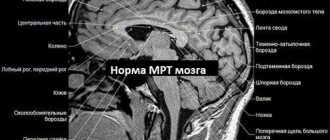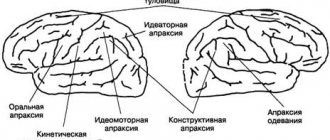A pathology caused by the slow progressive death of nerve cells in humans that are responsible for motor functions is called Parkinson's disease. The first symptoms of the disease are trembling (tremor) of the muscles and an unstable position at rest of individual parts of the body (head, fingers and hands). Most often they appear at 55-60 years of age, but in some cases, early onset of Parkinson's disease has been recorded in people under 40 years of age. Subsequently, as the pathology develops, the person completely loses physical activity and mental abilities, which leads to the inevitable attenuation of all vital functions and death. This is one of the most difficult diseases in terms of treatment. How long can people with Parkinson's disease live with the current level of medicine?
Etiology of Parkinson's disease
Physiology of the nervous system.
All human movements are controlled by the central nervous system, which includes the brain and spinal cord. As soon as a person thinks about any intentional movement, the cerebral cortex already alerts all parts of the nervous system responsible for this movement. One of these sections is the so-called basal ganglia . This is an auxiliary motor system responsible for how quickly movements are made, as well as the accuracy and quality of those movements.
Information about movement comes from the cerebral cortex to the basal ganglia, which determine which muscles will participate in it, and how much each muscle must be tense in order for the movements to be as precise and targeted as possible.
The basal ganglia transmit their impulses using special chemical compounds - neurotransmitters. How the muscles work depends on their quantity and mechanism of action (exciting or inhibitory). The main neurotransmitter is dopamine, which inhibits excess impulses, and thereby controls the accuracy of movements and the degree of muscle contraction.
The substantia nigra (Substantia nigra) is involved in complex motor coordination, supplying dopamine to the striatum and transmitting signals from the basal ganglia to other brain structures. The substantia nigra is so named because this area of the brain is dark in color: the neurons there contain a certain amount of melanin, a byproduct of dopamine synthesis. It is the lack of dopamine in the substantia nigra of the brain that leads to Parkinson's disease.
Parkinson's disease - what is it?
Parkinson's disease is a neurodegenerative brain disease that progresses slowly in most patients. Symptoms of the disease may gradually appear over several years.
The disease occurs against the background of the death of a large number of neurons in certain areas of the basal ganglia and the destruction of nerve fibers. In order for the symptoms of Parkinson's disease to begin to appear, about 80% of neurons must lose their function. In this case, it is incurable and progresses over the years, even despite treatment.
Neurodegenerative diseases are a group of slowly progressive, hereditary or acquired diseases of the nervous system.
Also a characteristic sign of this disease is a decrease in the amount of dopamine. It becomes insufficient to inhibit the constant excitatory signals of the cerebral cortex. The impulses are able to travel directly to the muscles and stimulate their contraction. This explains the main symptoms of Parkinson's disease: constant muscle contractions (tremor, trembling), muscle stiffness due to excessively increased tone (rigidity), and disturbance of voluntary body movements.
Parkinsonism and Parkinson's disease, differences
There are:
- primary parkinsonism or Parkinson's disease, it is more common and irreversible;
- secondary parkinsonism - this pathology is caused by infectious, traumatic and other brain lesions, and is usually reversible.
Secondary parkinsonism can occur at absolutely any age under the influence of external factors.
- In this case, the disease can be provoked by:
- encephalitis;
- brain injuries;
- poisoning with toxic substances;
- vascular diseases, in particular atherosclerosis, stroke, ischemic attack, etc.
Forms
Each course of Parkinson's disease is individual, so the prognosis often cannot be determined accurately. However, this disease is currently listed as incurable, so treatment is aimed only at maintaining the condition and improving the patient’s living conditions.
The main forms are determined depending on what symptoms of Parkinson's disease appear:
1. Trembling form. As the name suggests, the main symptom of this form is tremor. Other manifestations may be absent or weakly manifested for a long time. This manifestation is rare, occurring in approximately 6-7% of cases. The patient cannot perform basic movements associated with fine motor skills. A phenomenon may occur in which, after an emotional shock, the tremor stops. And the patient can perform movements that were just inaccessible to him without effort. After some time, this phenomenon subsides and the symptoms resume.
2. Rigid-trembling form. One of the most common. The clinic begins with increased muscle tone, then tremors and motor dysfunction appear:
- bradykinesia;
- amimia;
- puppet walk;
- specific pose.
Hypokinesia quickly leads to disability and forces the patient to be dependent on an outsider.
3. Trembling-rigid form. Similar to the above form, but in this case there is greater emphasis on the tremor, which begins at the distal parts of the hands. Then he rises, grabbing the entire arm, and sometimes the entire body. Hypokinesia is less pronounced than in the previous form. The most common form.
4. Akinetic-rigid form. In this case, there is no tremor, but the clinical signs of lethargy and slowness are pronounced. Muscle stiffness causes pain, amymia, impaired movement, inability to stop in time, loss of balance and frequent falls.
5. Akinetic form. Rare, one of the most severe forms of Parkinson's disease. Voluntary movements are completely absent, and the patient quickly becomes completely incapacitated.
Each form of Parkinson's disease requires a separate special course of treatment. As the disease progresses, therapy may change.
Symptoms and signs
How does Parkinson's disease manifest?
- Signs of Parkinson's disease include a persistent loss of control over your movements:
- rest tremor;
- stiffness and reduced muscle mobility (rigidity);
- limited volume and speed of movements;
- decreased ability to maintain balance (postural instability).
A resting tremor is a tremor that occurs at rest and disappears with movement. The most typical examples of resting tremor can be sudden shaking movements of the hands and oscillating movements of the head of the “yes-no” type.
- Symptoms not related to physical activity:
- depression;
- pathological fatigue;
- loss of smell;
- increased salivation;
- excessive sweating;
- metabolic disease;
- problems with the gastrointestinal tract;
- mental disorders and psychoses;
- disturbance of mental activity;
- impairment of cognitive functions.
- The most characteristic cognitive impairments in Parkinson's disease are:
- memory impairment;
- slowness of thinking;
- disturbances of visual-spatial orientation.
In young people
Sometimes Parkinson's disease occurs in young people between the ages of 20 and 40, which is called early-onset parkinsonism. According to statistics, there are few such patients - 10-20%. Parkinson's disease in young people has the same symptoms, but is milder and progresses more slowly than in older patients.
- Some symptoms and signs of Parkinson's disease in young people:
- In half of patients, the disease begins with painful muscle contractions in the limbs (usually in the feet or shoulders). This symptom can make it difficult to diagnose early parkinsonism because it is similar to arthritis.
- Involuntary movements in the body and limbs (which often occur during dopamine therapy).
Subsequently, signs characteristic of the classic course of Parkinson’s disease at any age become noticeable.
Among women
Symptoms and signs of Parkinson's disease in women are no different from general symptoms.
In men
Likewise, the symptoms and signs of the disease in men are not particularly noticeable. The only thing is that men get sick a little more often than women.
Mental disorders
The consequence of Parkinson's disease can be acute psychosis and panic attack in most cases while taking psychotic drugs (neuroleptics). The mechanism of appearance is due to blocking of dopamine receptors. It develops in the first days of prescribing the drug or by independently increasing the daily dosage.
Neuroleptic malignant syndrome develops at any age; the largest number of cases have been registered in men of the middle and older age groups. Risk factors include:
- infectious diseases;
- exacerbation of chronic diseases of internal organs;
- exhaustion, cachexia;
- massive loss of fluid (dehydration);
- akinetic crisis.
In drug-induced psychosis, hallucinations, illusions, delusions, and hallucinosis occur. Patients may experience fear of being poisoned. Illusions are created of being maimed by loved ones or caring staff. Consequences appear in the form of delusions of persecution and delusions of jealousy.
Complications of Parkinson's disease reach their maximum peak after 2-3 days and can be stopped without additional therapy after 1-2 weeks. The laboratory consequence of psychosis is an increase in creatine kinase and blood leukocyte levels.
Diagnostics
There are currently no laboratory tests that can be used to diagnose Parkinson's disease.
The diagnosis is made based on the medical history, results of a physical examination and tests. Your doctor may order certain tests to look for or rule out other possible conditions that cause similar symptoms.
One of the signs of Parkinson's disease is the presence of improvements after starting to take anti-Parkinsonian drugs.
There is also another diagnostic test called PET (positron emission tomography). In some cases, PET scans can detect low levels of dopamine in the brain, which is the main symptom of Parkinson's disease. But PET scans are generally not used to diagnose Parkinson's disease because they are very expensive and many hospitals do not have the necessary equipment.
Stages of development of Parkinson's disease according to Hoehn-Yahr
This system was proposed by English doctors Melvin Yahr and Margaret Hen in 1967.
Stage 0. The person is healthy, there are no signs of illness.
Stage 1. Minor motor disturbances in one hand. Nonspecific symptoms appear: impaired sense of smell, unmotivated fatigue, sleep and mood disorders. Then the fingers begin to tremble when excited. Later, the tremor intensifies, and tremors also appear at rest.
Intermediate stage (“one and a half”). Localization of symptoms in one limb or part of the body. Constant tremor that disappears during sleep. The whole hand may tremble. Fine motor skills become difficult and handwriting deteriorates. There is some stiffness in the neck and upper back, and limited swing movements of the arm when walking.
Stage 2 . Motor impairments affect both sides. Tremor of the tongue and lower jaw is possible. Possible drooling. Difficulty moving joints, worsening facial expressions, slow speech. Sweating disorders; the skin can be dry or, on the contrary, oily (dry palms are typical). The patient is sometimes able to restrain involuntary movements. A person copes with simple actions, although they are noticeably slower.
Stage 3. Hypokinesia and rigidity increase. The gait takes on a “puppet” character, which is expressed in small steps with feet placed parallel to each other. The face becomes mask-like. There may be a head tremor similar to nodding movements (“yes-yes” or “no-no”). The formation of a “petitioner pose” is characteristic - a head bent forward, a hunched back, arms pressed to the body and bent at the elbows, legs half-bent at the hip and knee joints. Movements in the joints are like a “gear mechanism.” Speech impairments progress – the patient becomes fixated on repeating the same words. A person serves himself, but with sufficient difficulties. It is not always possible to fasten the buttons and get into the sleeve (help would be desirable when dressing). Hygiene procedures take several times longer.
Stage 4. Severe postural instability - the patient has difficulty maintaining balance when getting out of bed (may fall forward). If a standing or moving person is slightly pushed, he continues to move by inertia in the “given” direction (forward, backward or sideways) until he encounters an obstacle. Falls that can lead to fractures are common. It is difficult to change body position while sleeping. Speech becomes quiet, nasal, and slurred. Depression develops and suicide attempts are possible. Dementia may develop. In most cases, outside assistance is required to carry out simple daily activities.
Stage 5. The last stage of Parkinson's disease is characterized by the progression of all motor disorders. The patient cannot stand up or sit down, and does not walk. He cannot eat on his own, not only because of tremors or stiffness of movements, but also because of swallowing disorders. Control over urination and bowel movements is impaired. The person is completely dependent on others, his speech is difficult to understand. Often complicated by severe depression and dementia.
Dementia is a syndrome in which cognitive function (that is, the ability to think) deteriorates to a greater extent than is expected with normal aging. It is expressed in a persistent decrease in cognitive activity with the loss of previously acquired knowledge and practical skills.
Causes
- Scientists still it was not possible to identify the exact reasonsthe occurrence of Parkinson's disease, however, some factors can trigger the development of this disease:
- Aging - with age, the number of nerve cells decreases, this leads to a decrease in the amount of dopamine in the basal ganglia, which in turn can trigger Parkinson's disease.
- Heredity - the gene for Parkinson's disease has not yet been identified, but 20% of patients have relatives with signs of parkinsonism.
- Environmental factors - various pesticides, toxins, toxic substances, heavy metals, free radicals can provoke the death of nerve cells and lead to the development of the disease.
- Medications – Some antipsychotic drugs (such as antidepressants) interfere with dopamine metabolism in the central nervous system and cause side effects similar to symptoms of Parkinson's disease.
- Injuries and diseases of the brain - bruises, concussions, as well as encephalitis of bacterial or viral origin can damage the structures of the basal ganglia and provoke illness.
- Improper lifestyle - risk factors such as lack of sleep, constant stress, poor diet, vitamin deficiencies, etc. can lead to pathology.
- Other diseases - atherosclerosis, malignant tumors, diseases of the endocrine glands can lead to complications such as Parkinson's disease.
What could be the consequences?
The disease has serious consequences. At the last stage, the patient is bedridden. The longer therapy is delayed, the more actively symptoms from various organs increase.
Consequences of the disease if not treated promptly:
- inability to make movements or akinesia, the most severe consequence is complete immobility;
- dementia - manifests itself in the form of isolation of the patient, passivity, susceptibility to depression and pallor of the emotional background; without treatment, the prognosis worsens;
- pathologies of the organs of vision - the patient begins to blink rarely, about 4 times a minute, which leads to inflammation of the eyelid and conjunctivitis, the eyes always look tired;
- Chronic constipation is a dangerous sign; the disorder is associated with a change in diet, because patients cannot consume the amount of food necessary for normal gastrointestinal function, which can lead to death.
How to treat Parkinson's disease
- Parkinson's disease in the initial stages is treated with medication, by administering the missing substance. The substantia nigra is the main target of chemical therapy. With this treatment, almost all patients experience a weakening of symptoms, it becomes possible to lead a lifestyle close to normal and return to their previous way of life.
- However, if after several years patients do not improve (despite increasing the dose and frequency of taking medications), or complications arise, a surgical option is used, during which a brain stimulator is implanted.
- The operation involves high-frequency stimulation of the basal ganglia of the brain with an electrode connected to an electrical stimulator:
- Under local anesthesia, two electrodes are sequentially inserted (along a path predetermined by the computer) for deep brain stimulation.
- Under general anesthesia, an electrical stimulator is sewn subcutaneously into the chest area, to which electrodes are connected.
Treatment of parkinsonism, drugs
Levodopa. Levodopa has long been considered the best treatment for Parkinson's disease. This drug is a chemical precursor to dopamine. However, it is characterized by a large number of serious side effects, including mental disorders. It is best to prescribe levodopa in combination with peripheral decarboxylase inhibitors (carbidopa or benserazide). They increase the amount of levodopa reaching the brain and at the same time reduce the severity of side effects.
Madopar is one of these combination drugs. Madopar capsule contains levodopa and benserazide. Madopar is available in different forms. Thus, madopar GSS is located in a special capsule, the density of which is less than the density of gastric juice. This capsule remains in the stomach for 5 to 12 hours, and the release of levodopa occurs gradually. And madopar dispersible has a liquid consistency, acts faster and is more preferable for patients with swallowing disorders.
Amantadine. One of the medications that usually starts treatment is amantadine (midantan). This drug promotes the formation of dopamine, reduces its reuptake, protects neurons of the substantia nigra by blocking glutamate receptors and has other positive properties. Amantadine effectively reduces rigidity and hypokinesia and has less effect on tremor. The drug is well tolerated, side effects are rare with monotherapy.
Miralex. Miralex tablets for Parkinson's disease are used both for monotherapy in the early stages and in combination with levodopa in later stages. Miralex has fewer side effects than non-selective agonists, but more than amantadine: nausea, blood pressure instability, drowsiness, swelling of the legs, increased levels of liver enzymes are possible, and hallucinations may develop in patients with dementia.
Rotigotine (Neupro). Another modern representative of dopamine receptor agonists is rotigotine. The drug is made in the form of a patch applied to the skin. The patch, called a transdermal therapeutic system (TTS), ranges in size from 10 to 40 cm² and is applied once a day. Newpro is available by prescription for the monotherapy of early stage idiopathic Parkinson's disease (without levodopa).
This form has advantages over traditional agonists: the effective dose is lower, side effects are much less pronounced.
MAO inhibitors. Monoamine oxidase inhibitors inhibit the oxidation of dopamine in the striatum, thereby increasing its concentration in synapses. Selegiline is most often used in the treatment of Parkinson's disease. In the early stages, selegiline is used as monotherapy, and half of the patients report significant improvement during treatment. Side effects of selegiline are not frequent and not pronounced.
Selegiline therapy allows delaying the prescription of levodopa for 9-12 months. In later stages, selegiline can be used in combination with levodopa - it can increase the effectiveness of levodopa by 30%.
Mydocalm reduces muscle tone. Its use in parkinsonism as an auxiliary medicine is based on this property. Mydocalm is taken either orally (tablets), intramuscularly or intravenously.
B vitamins are actively used in the treatment of most diseases of the nervous system. Vitamin B₆ and nicotinic acid are needed to transform L-Dopa into dopamine. Thiamine (vitamin B₁) also helps increase dopamine in the brain.
Parkinson's disease and life expectancy
How long do people live with Parkinson's disease?
- There is evidence of serious research by British scientists, indicating that life expectancy in Parkinson's disease is influenced by the age of onset of the disease:
- persons whose disease began at the age of 25-39 years live an average of 38 years;
- with an initial age of 40-65 years, they live about 21 years;
- and those who become ill over the age of 65 live about 5 years.
Hereditary factor
No specialist can answer the question of whether Parkinson's disease is inherited. Geneticists have been studying this disease factor for many years and can emphasize the following:
- The first signs of the disease, as a rule, appear already in old age, so even if the patient has had cases of pathology in his family, he may simply not live to see the age when he first develops signs of parkinsonism.
- The development of pathology is influenced by the place and region of residence, conditions, blood type and lifestyle - that is, even if parkinsonism is inherited, a number of factors are needed for the manifestation of the disease.
- Parkinson's disease is inherited most often in those individuals in whose family there were cases of pathology and they were detected at an early age.
Prevention of Parkinson's disease
- To date, there are no specific methods for preventing the development of Parkinson's disease; there are only general tips on this matter:
- to eat well;
- lead a healthy and fulfilling life;
- protect yourself from unnecessary worries and stress;
- do not abuse alcohol;
- move more often;
- train memory;
- engage in active mental activity.
Author of the article: Sergey Vladimirovich, a supporter of reasonable biohacking and an opponent of modern diets and quick weight loss. I’ll tell you how a man aged 50+ can stay fashionable, handsome and healthy, and how to feel like 30 in his fifties. Read more about the author.











